EY refers to the global organization, and may refer to one or more, of the member firms of Ernst & Young Global Limited, each of which is a separate legal entity. Ernst & Young Global Limited, a UK company limited by guarantee, does not provide services to clients.

This webcast will explore how boards are taking a more proactive approach to getting work done.
Join the EY Center for Board Matters on Tuesday, August 15, 2023, at 3:00 p.m. ET for another episode in our webcast series, Better Questions for Boards, designed to provide directors with insights and questions to consider as they engage with management on a variety of complex boardroom issues.
Corporate boards are facing an inflection point in their evolution. Emerging technologies are leading directors to interact with each other and execute their oversight in new ways. While waves of change have swept boardrooms in the past, these have usually followed corporate crises or new regulatory requirements. This time is different. We surveyed hundreds of directors to find out how today’s boards are proactively changing to provide more effective oversight. Topics will include:
- Evolution of board operations. Learn how boards have evolved in the past, how they are currently changing their ways of working, and how they engage with management, stakeholders and each other.
- How boards are adapting. Find out the impact to meeting agendas and structures, including where boards wish they could spend more and less time.
- Leading practices for optimizing the board. Hear what boards are doing differently to evolve — and the principles for making these changes.
This 75-minute webcast will be moderated by Kris Pederson, EY Americas Leader, Center for Board Matters. Panelists will include:
- Marshall Cooper, CEO, Chief Executive Group
- Sandra Phillips Rogers, General Counsel and Chief Legal Officer, Toyota Motor North America; Board Member, MSA and Chemours
- Shelley Stewart Jr., Board Member, Kontoor Brands, Otis Worldwide and Clean Harbors
Key takeaways
- Waves of change have swept boardrooms in the past, but usually in the aftermath of major corporate crises and new regulatory developments, such as Sarbanes-Oxley and Dodd-Frank. More recently, boards are making changes proactively, responding to changing social norms and embracing new technologies as they enter a new era of board governance.
- A survey of board members done by Corporate Board Member and Ernst & Young LLP provides some insight into how boards are changing. For example, we asked directors to identify which of 10 changes they have made to their board meetings in the last three years. Seventy-one percent of respondents reported that they made at least three changes, and 93% of directors said that these changes are here to stay. The most cited change was the addition of some virtual meetings. While this can add convenience and other benefits, there’s no substitute for in-person meetings. Read the full report for details on the survey.
- Directors want to spend more time in open discussion among the board and leadership and less time in management presentations; more time engaging with executives and high potential employees; and more time focusing on new and emerging issues. If directors were forced to remove two hours from meetings, they said they would cut back on management presentations – and a third would reduce director-only social time. Presentations won’t go away entirely, but some boards are making progress to build greater efficiencies (e.g., pre-reads, summaries, consent agendas, having board members attend all committee meetings). There are tradeoffs, of course, but also a real opportunity to make sure that board meetings meet the right mark and allow more time for strategic discussion.
- To achieve more intentional and focused engagement, especially with rising executive talent, boards are finding innovative ways to invite input and perspectives from more employees. For example, some boards invite employees from various levels to presentations, attend trade shows and larger company events (e.g., holiday parties), visit company operational sites, and host speed-dating style engagement opportunities between directors and employees.
- When asked how to improve the quality of the information boards receive from management, directors say they want more forward-looking information, fewer historical results and more focus on the most critical key performance indicators (KPIs). In terms of instigating that change, directors say the onus is on the boards themselves. It is incumbent on boards— in particular, the independent lead director or chair — to clarify and better define expectations and provide clear direction for what is and what might not be needed, or could be summarized more effectively.
- To make effective changes, there are tradeoffs that must be addressed. For example, if boards want more time for discussion in board meetings, they need to spend more time outside of the board meeting to get up to speed on critical issues and reviewing routine matters. Directors discussed the opportunity for both the board and management to work smarter (not harder) and spend their time together differently (not just more time) by making use of consent agendas and repurposing time and activities to be more intentional and productive.
- Artificial intelligence (AI) could potentially create more efficiencies for board operations and be a game-changer for the board. For example, it might be used to collect and summarize data, identify patterns and deviations, and help directors ask better questions. AI is not perfect, and boards are only beginning to scratch the surface. Directors must have the right education, work with management on policies and governance structures, and understand the potential opportunities and risks.
- There is no one-size-fits-all solution for how boards adapt and change, but there are some common considerations for boards thinking about making changes. For example, there should be a shared understanding of “the work to be done by the board.” Regulations will continue to have an impact on how the board works, but boards themselves are pursuing more efficient ways of working, more intentional engagement, and more time spent serving as a strategic resource. Management may also choose to embrace a new paradigm: instead of viewing their time with the board only as an opportunity to report out status, executives must consider how to use that time to engage directors, seek their counsel and understand their external viewpoints in order to unlock the full value of the board and thus more value for the company.
What we heard from the audience
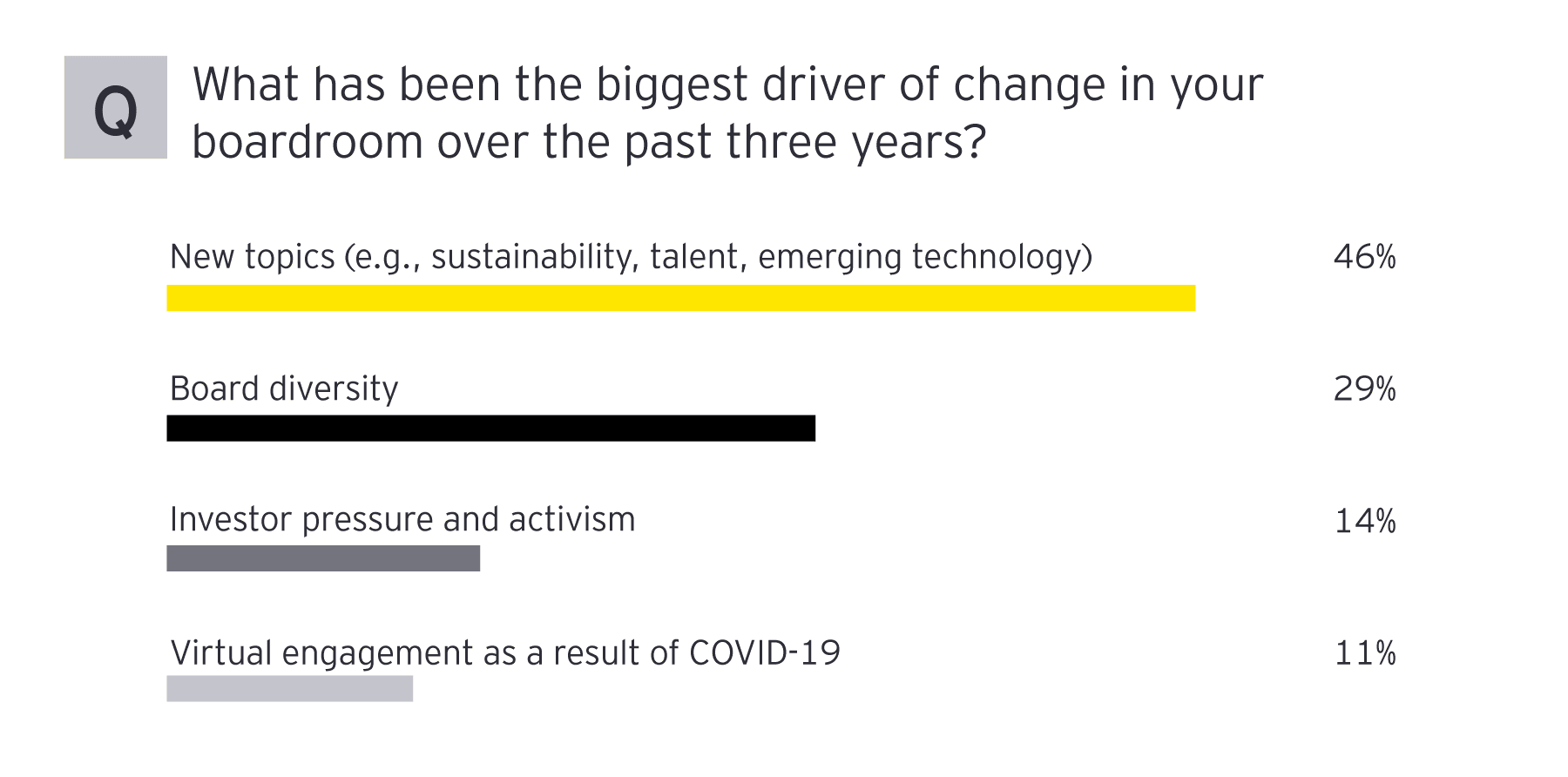
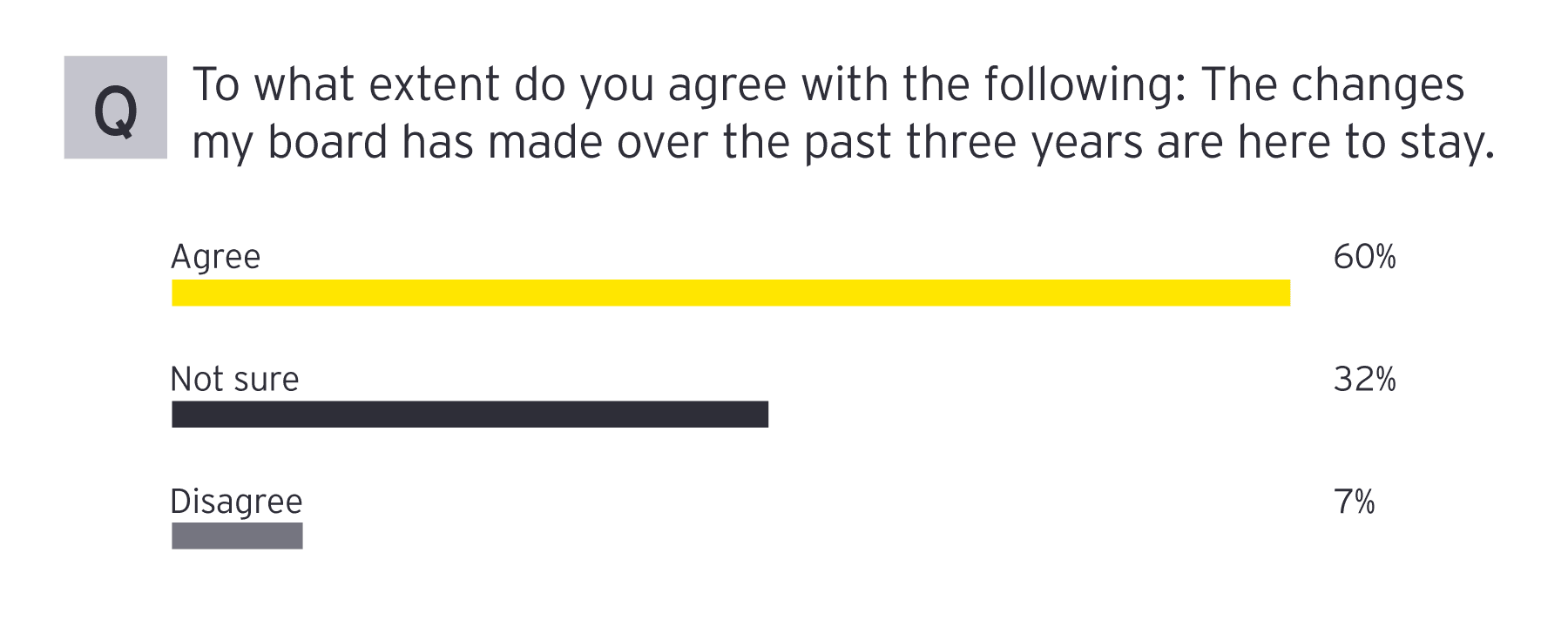
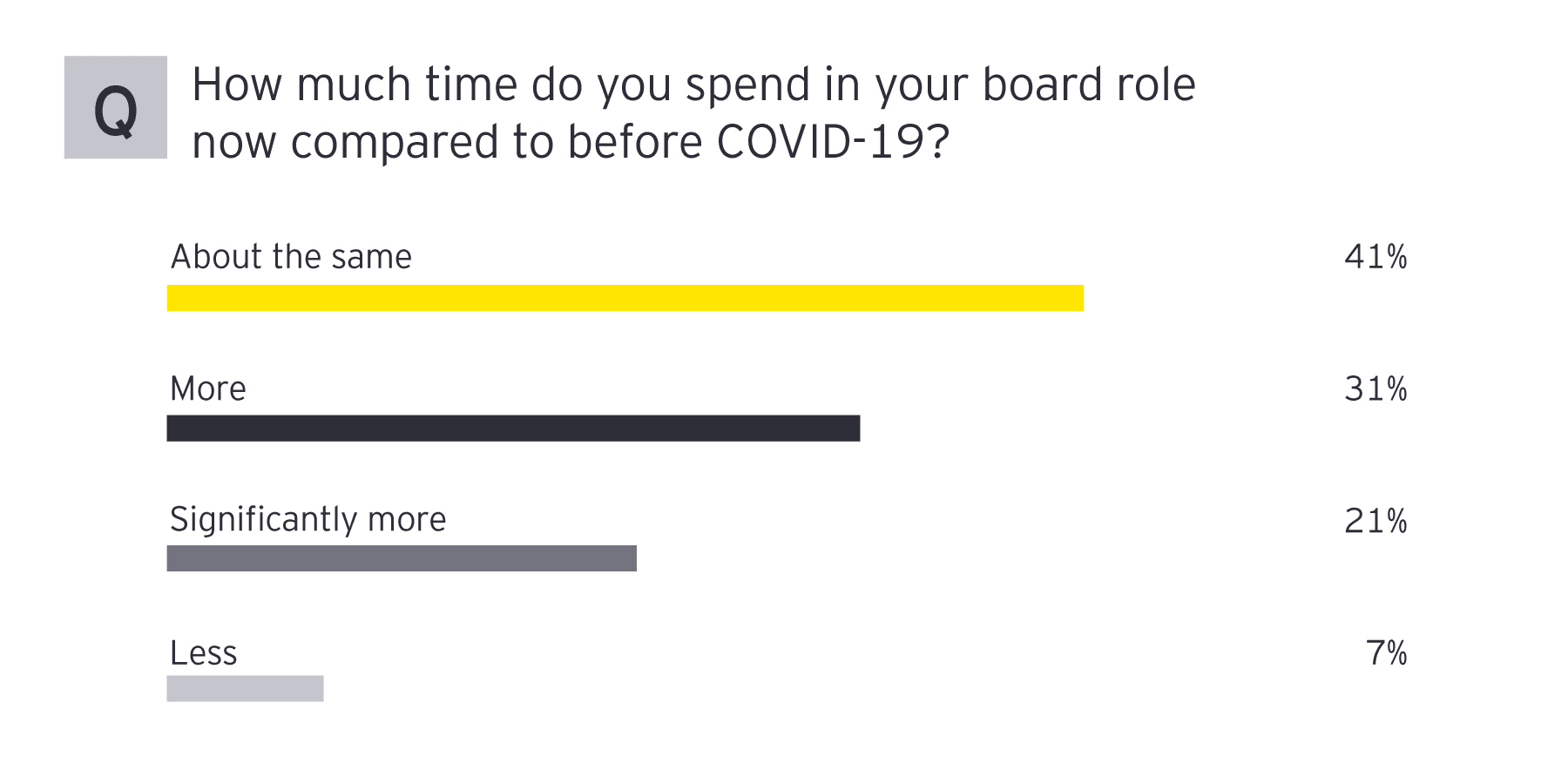
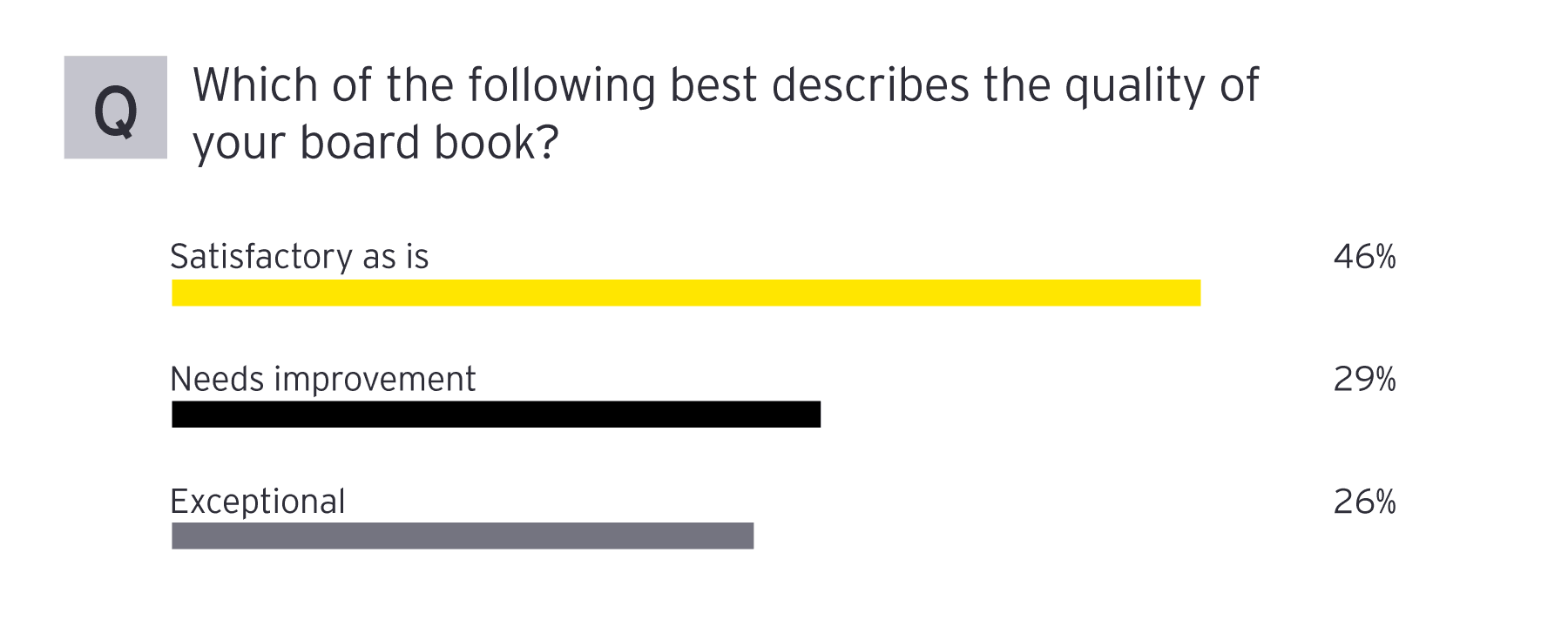
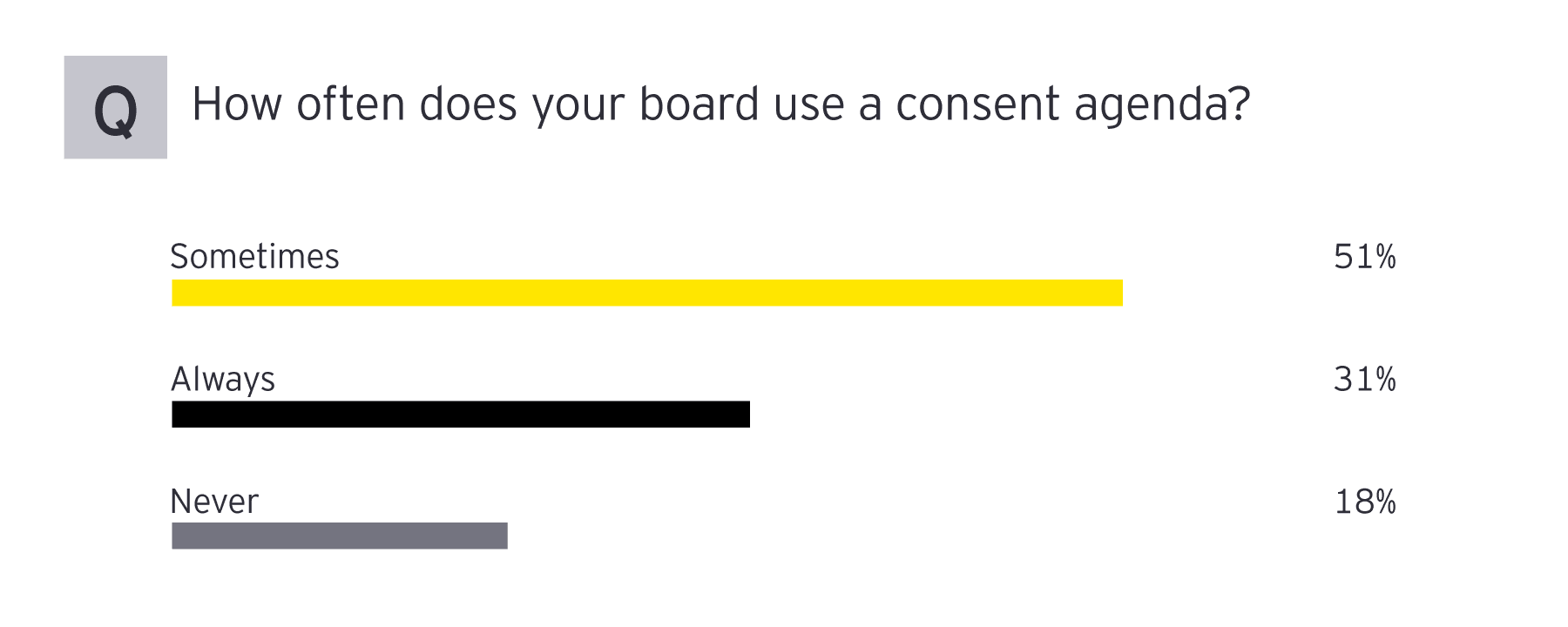
Webcast
CPE credits: 1.4
Time
your local time


